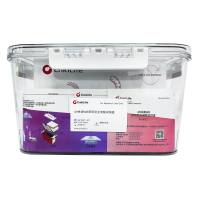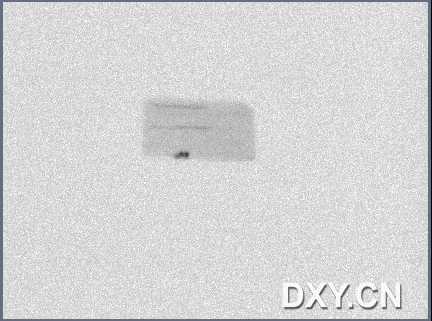Western blot and gel overlays(蛋白印记与凝胶覆盖)
互联网
- 相关专题
I illustrate western blot s and gel overlayson this page. See Old and Primrose for details.
Western blotting:
SDS-Page-
An antibody prepared a known protein is used as a probe. The antibody will be typically prepared in rabbits against purified protein (Details unimportant). The protein sample is separated on the basis of molecule size by (typically ) gel electrophoresis. i.e . proteins (polypeptides) of the same size will run to the same position on the gel. Proteins are separated into their separate polypeptide subunits. The proteins are then transferred and fixed to a membrane (blotted), preserving the separation pattern. The specific (primary) antibody is added in solution to the membrane and incubated in chemical conditions which allow it bind the corresponding antigen. i.e. the antibody seeks the corresponding antigen (strictly speaking epitope) among a complex mixture and bind it. The membrane is then treated with a detection system usually involving a secondary antibody. The secondary antibody is raised against the primary antibody, e.g. rabbit antibody is used to make an antibody in a goat - hence "goat anti-rabbit". This secondary antibody is chemically tagged, and the tag can involve an enzyme which is then found on the basis of the labelling system used. There are 4-5 separate principals used: gold particles, biotin, fluorescent tags, alkali phosphatase, peroxidase. Some of these detection methods are used for western blotting, others in immunohistological techniques.
Uses:
Western blotting: Determine in which tissues, or under which physiological conditions a gene is expressed to produce a protein. Determine whether a transgenic organism expresses the inserted gene to produce a protein. (Does it tell you if the protein works?) Gel overlay (below) The study of protein-protein interactions - e.g . as a confirmation of a yeast-two hybrid screen.An example
Characterisation of 14-3-3 from barley, induced in leaves by the powdery mildew fungus. An antibody raised against a protein isolated from cow brain (bovine) finds antigen in pea and barley leaves and barley roots. Note that there are bands of different sizes: these represent different isoforms of the protein.
from: Brandt, J., Thordal-Christensen, H., Vad, K., Gregersen, P.L., and Collinge, D.B. (1992). A pathogen-induced gene of barley encodes a protein showing high similarity to a protein kinase regulator. The Plant Journal. 2: 815-820. Medline abstract (copyright: Blackwell)











